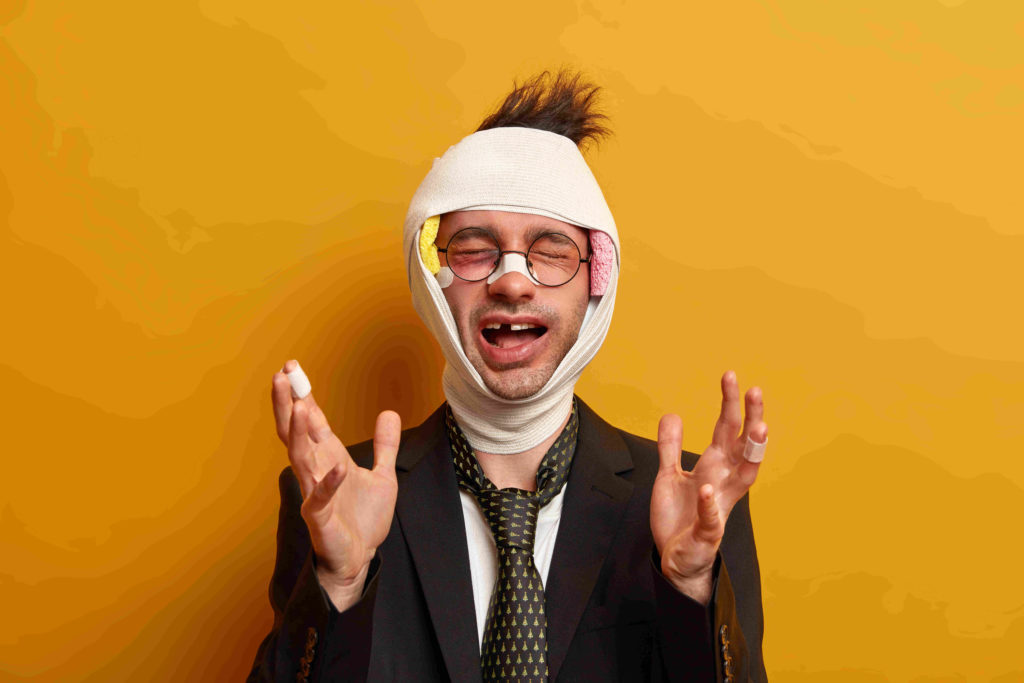During leisure activities, sports or household chores, a dental accident can easily happen. In fact, it is estimated that around one in two minors will suffer an accident to the oral cavity before reaching the age of 16. Young people are indeed the most affected by this type of injury, which is always a major risk. dental emergencies in Switzerland. The good news is that there are steps you can take to save your damaged tooth and limit the consequences. The key is to react quickly and correctly. Discover HELVIDENT's advice.
Emergency measures to take after a dental accident
In most cases, permanent teeth can be saved if you act quickly and take the right precautions. As in all emergency situations, it's important to keep a cool head and avoid making panic-induced mistakes.
If the person is bleeding from the mouth, bite down on a sterile gauze pad or, failing that, a clean tissue. You can apply ice to the outside of the cheeks or mouth. In the event of expulsion, try to find the tooth and grab it by the crown (the visible part of the tooth). Never clean a pulled tooth, nor grasp it by the root. Keep it in a moist container.
The different types of dental accident
Tooth pulled out, tooth broken, tooth cracked, tooth moving... Oral trauma can take many forms. It generally occurs after an external physical shock, such as a fall, accident or blow. Damage to dental structures varies in severity, and can lead to permanent loss of the dental organ.
- tooth contusion (shaking of the tooth without apparent injury)
- cracking of the dental crown (cracks in enamel and sometimes dentin)
- partial or complete coronal fracture (loss of a piece of tooth or the entire tooth)
- root fracture
- incomplete luxation or subluxation (displacement of the tooth into its bony cavity)
- complete luxation (expulsion of a tooth)
Teeth at the front of the mouth are naturally more exposed to impact. These are mainly the incisors and upper canines. Molars and premolars are less likely to be affected, as they are protected at the back of the mouth.
In the event of a dental accident, other parts of the oral cavity may also be affected:
- tooth-supporting elements: alveolar bone and gums
- oral mucosa: lips and cheeks
- the language
- the maxillae
Dental accidents in children and adolescents
Children and teenagers are the first victims of dental trauma. In fact, around 50 % of Europeans will have suffered this type of accident before their sixteenth birthday. The reasons for this vary according to the period of life involved:
Between 1 and 3 years: lack of movement coordination, protective reflexes and learning to walk can lead to falls and bumps against the edges of furniture or objects.
From childhood to adolescence: cycling, rollerblading, scootering, certain contact or team sports, school games, fights, traffic accidents...
Children who have suffered trauma to the oral cavity should also seek urgent medical attention. Damage to baby teeth can potentially cause permanent damage to teeth that have not yet erupted.
Recommendations of the Swiss Society of Dentists (SSO)
In the event of a dental accident, the Swiss Society of Dentists SSO details gestures according to the situation :
- Movable or displaced tooth: leave the teeth in position.
- Broken crown: keep the broken tooth fragment in water.
- Pulled tooth: place the pulled tooth in a tooth rescue box, available from pharmacies or dental practices. Alternatively, soak it in a physiological solution, milk or a plastic bag containing a little saliva. You can also wrap it in cling film for transport. Do not store in ice or dry conditions.
No matter what type of dental accident you have, it's essential that it be attended to by a dental practitioner. Contact a professional by telephone to describe the circumstances of the accident. He or she will ask you for information about the victim and the nature of the injuries. Depending on the seriousness of the situation, your dentist will explain how to proceed. You can take the injured person to one of our dental clinics in Lausanne, Fribourg or Aigle as soon as possible. This is a dental emergency.
Treatment of dental trauma
During a dental emergency consultation in Switzerland, the dentist examines the oral cavity. He may take an X-ray or perform a cold vitality test. If possible, the practitioner glues the pieces of the broken tooth back together. In the case of displaced or loose teeth, they are put back in place and fixed with a bonded splint.
In the case of expelled permanent teeth, reimplantation is possible if all conditions are met. The shorter the time between tooth expulsion and re-implantation, the greater the chances of success. The best results are obtained in less than 20 minutes. Pulled teeth placed in a tooth rescue box remain viable for up to 24 hours.
HELVIDENT dental clinics welcome you for dental emergencies in Lausanne, Fribourg and Aigle. Don't hesitate to contact us if you have a dental accident.

